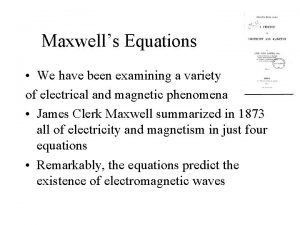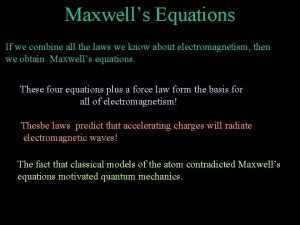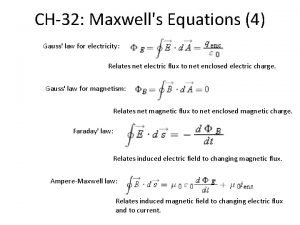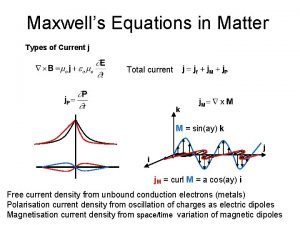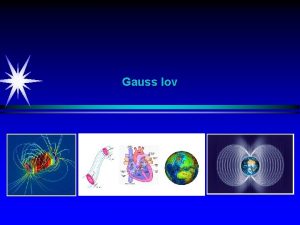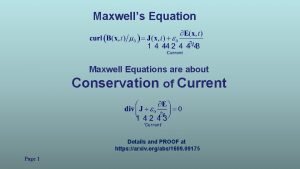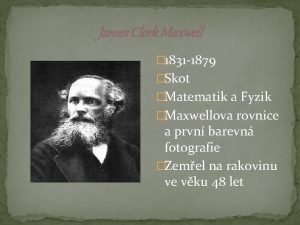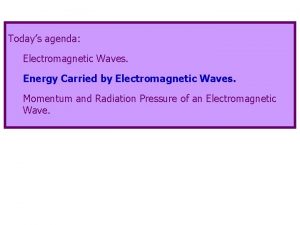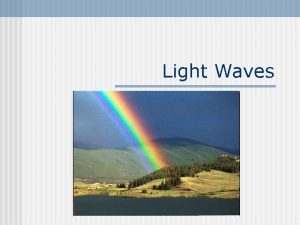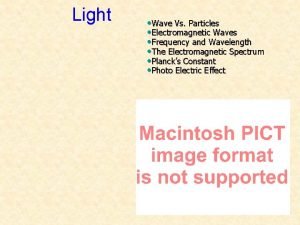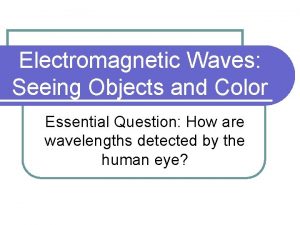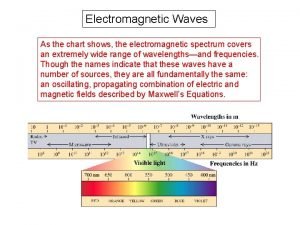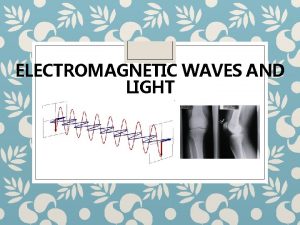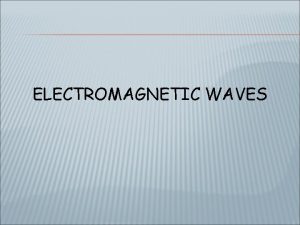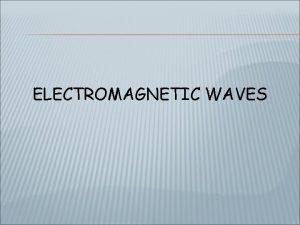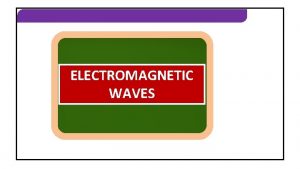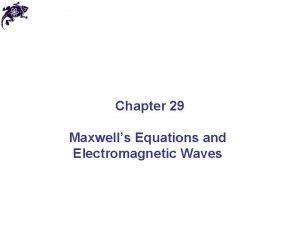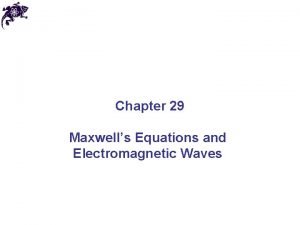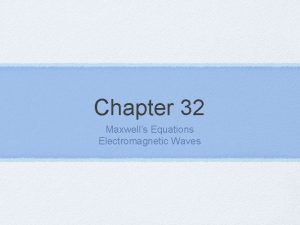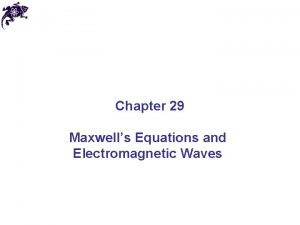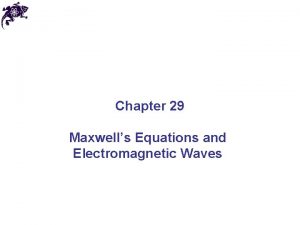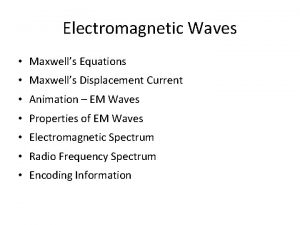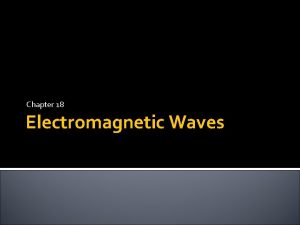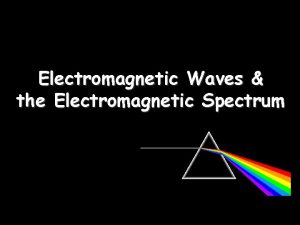Chapter 24 Electromagnetic Waves Maxwells Equation Two Versions





















- Slides: 21

Chapter 24 Electromagnetic Waves

Maxwell’s Equation (Two Versions)

Electromagnetic Wave Light is represented by fluctuations in the magnetic and electric field called electromagnetic waves. EM wave is a consequence of the Maxwell’s Equation. B E

Basic Facts about EM waves in vacuum • Always travels at exactly the speed of light c. • E and B are always perpendicular. • E×B gives the direction of the wave. • |E|=|c. B| • Two independent direction of polarization (later)

The electromagnetic spectrum

Why do we see colors?

Question This is precisely the speed of light! Conclusive proof that light is a kind of EM wave.

Bible? And God said, Let there be light, and there was light. - Genesis 1: 3

Light as a wave From this equation you can figure out the frequency from the wavelength or vice versa. You will do this many times in HW 24.

Polarization (no need to memorize)

Circular Polarization (Skip) Combination of vertical and horizontal polarization

Polarizing Filters Electrons on long polymers (long molecules) that moves only in one direction, hence absorbing energy of the E field in that direction, but let the other direction through.

Intensity Rules for Polarizer Make sure you know whether the light is polarized or unpolarized

Polarized light through filter (Proof not needed for PHYS 174)

Example with two filters

Example

Polarization by Reflection At the Brewster angle (or polarizing angle) θp, the reflected beam becomes polarized.

Brewster’s Angle Complete polarization by reflection occurs when the reflected beam is perpendicular to the refracted beam.

Brewster’s Angle Pictures taken with polarizers at different angles. The picture on the right has the reflected light removed by the polarizer to minimize reflection.

Polarization by Scattering

Huygen’s Principle Every point of a wave front may be considered the source of secondary wavelets that spread out in all directions with a speed equal to the speed of wave. The final wave is the sum of all these secondary wavelets.
 Mechanical waves and electromagnetic waves similarities
Mechanical waves and electromagnetic waves similarities Electromagnetic waves are transverse waves true or false
Electromagnetic waves are transverse waves true or false Examples of a mechanical wave
Examples of a mechanical wave Mechanical waves and electromagnetic waves
Mechanical waves and electromagnetic waves Difference between matter waves and electromagnetic waves
Difference between matter waves and electromagnetic waves Mechanical waves vs electromagnetic waves
Mechanical waves vs electromagnetic waves Mechanical and electromagnetic waves similarities
Mechanical and electromagnetic waves similarities Venn diagram of mechanical and electromagnetic waves
Venn diagram of mechanical and electromagnetic waves Sic architecture
Sic architecture Maxwells laws
Maxwells laws Maxwell equations
Maxwell equations Gauss law
Gauss law Maxwell equations in matter
Maxwell equations in matter Gauss lov
Gauss lov Maxwell.equations
Maxwell.equations Maxwells equations
Maxwells equations Electromagnetic waves vocabulary
Electromagnetic waves vocabulary Energy density of electric field
Energy density of electric field Electromagnetic waves characteristics
Electromagnetic waves characteristics Electromagnetic waves frequency
Electromagnetic waves frequency Electromagnetic waves seeing objects and color
Electromagnetic waves seeing objects and color Electro magnetic spectrum chart
Electro magnetic spectrum chart









